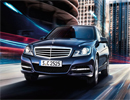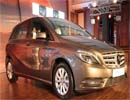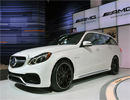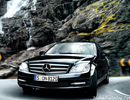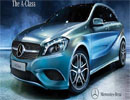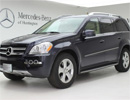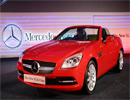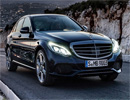| The Mercedes-Benz Classic Center is proud to reintroduce the car that began it all. Replicas of the Benz three-wheeler - the car whose patent is regarded as the "birth certificate of the automobile" - are once again in production. Crafted from the original materials - and with the same handcrafted precision - the replica three-wheelers convey the unique significance of the original.
The origins of the Daimler-Benz company founded through a merger in 1926 date back to the mid-1880s, when Gottlieb Daimler (1834-1900) working with Wilhelm Maybach (1846-1929), and Karl Benz (1844-1929) independently invented the internal combustion engine-powered automobile, in southwestern Germany. Although they were merely sixty miles apart, these pioneers were unaware of each other's early work.
Karl Benz had his shop in Mannheim and invented the world's first true automobile powered by an internal combustion engine in 1885. It had three wheels. He was granted a patent for his automobile, dated January 29, 1886, for what he called the "Benz Patent Motorwagen". Among many inventions, Benz patented his first engine in 1879 and included in his 'integral' design for the Motorwagen patent application, a high-speed single-cylinder four-stroke engine of his own design.
In 1885, Gottlieb Daimler and design partner Wilhelm Maybach, working in Cannstatt, Stuttgart, were granted a patent dated August 29, 1885 for what is generally recognized as the prototype of the modern gas engine, that they named the "grandfather clock engine".
On March 8, 1886, Daimler purchased a stagecoach made by Wilhelm Wimpff & Sohn and he and Maybach adapted it to hold this engine, thereby creating a four-wheeled carriage propelled by an engine, as many had before them. The only distinction about this carriage was that it carried an internal combustion engine. None of many similar attempts to adapt carts, boats, or carriages, in many countries, were propelled by this type of engine. On the official history pages of the Mercedes-Benz Internet site it is referred to as "a carriage - without a drawbar but with the conventional drawbar steering. A carriage without horses..." Daimler and Maybach later purposely built, from scratch, the first four-stroke engine powered automobile with four wheels in 1889. They founded DMG in 1890 and sold their first automobile in 1892.
Stationary engines were his major business and he invented many improvements to them and their application, but Karl Benz continued to refine his Motorwagen through several models and sold his first automobile in 1888. He built his first four-wheeled model in 1891. Benz & Cie, the company started by the inventor, became the world's largest manufacturer of automobiles by 1900.
In 1899, DMG automobiles built at Unterturkheim (a city district of Stuttgart) were raced successfully by Emil Jellinek (1853-1918), an automobile enthusiast and dealer. He had the name of his daughter, Mercedes, painted on the automobiles for good luck. Wanting faster race cars, it was Jellinek who spurred the development of the seminal 1900 DMG model that would be the first of the DMG Mercedes series, bearing the name of his daughter.
After suggesting some design specifications, he promised to purchase thirty-six of the new DMG model if Maybach would name the new 35 hp engine contained in it the Daimler-Mercedes engine. A contract of five hundred and fifty thousand marks was made for these new models. Within weeks he contracted for thirty-six of another DMG model with 8 hp engines. He was granted an exclusive concession to sell the new DMG automobiles in Austria-Hungary, France, Belgium, and USA.
That new model later would be named "Mercedes 35 hp" and it was a very important advance in automobile design. The contract called for delivery of the first automobile to Jellinek in the Fall, but it did not reach him until December 22, 1900. He became obsessed with the name Mercedes and even had his name changed to Jellinek-Mercedes. Jellinek was invited to sit on the DMG board of directors, which he did from 1901 until 1909, when he retired from automotive activities in favor of diplomatic appointments.
The name change also was helpful in preventing legal troubles, because after the death of Daimler, DMG had sold exclusive rights to the name, Daimler, and technical concepts to companies abroad. As a result, luxury automobiles branded Daimler were, and still are, built in England. A fire that gutted the old Steinway piano factory in New York, which had been converted to produce the new Mercedes models, cut short the dream of American production.
The rival companies of Daimler-Motoren-Gesellschaft (DMG) and Benz & Cie. started to cooperate in 1924, due to necessity arising from a troubled German economy after World War I, and finally merged in 1926 to become Daimler-Benz AG, which produced Mercedes-Benz automobiles and trucks. The merger agreement established that the two companies were required to remain together until 2000. While focusing on land vehicles, Mercedes-Benz also built engines to power boats and airplanes (military and civil), and even Zeppelins. Karl Benz died in 1929.
|


